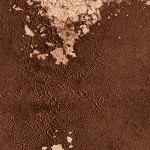On Thursday, September 26 at 1:00 p.m. (EDT), the Online Community hosted an hour-long webinar dedicated to the care of leather and fur objects. A stellar cast of presenters—Catharine Hawks, Beverly Perkins, and Fran Ritchie—covered the basic care of tanned, tawed, and untanned skins. From storage to cleaning methods, this webinar broadly covered how best to care for your organic objects. Presentations were followed by a live Q&A session. See recording below.
Featured Resources:
- PowerPoint Presentation Handout
- Click here for a printout of this full resource list.
- Care of Skin and Skin Products (Leather), Minnesota Historical Society
- Short article with general overview of definition/identification, deterioration, basic care (storage, repair, etc.), and proper display.
- How to Care for Leather and Skin Objects, Canadian Conservation Institute
- Links to CCI Notes (short articles) on several specific topics relating to leather and skin objects, from the Care of Rawhide & Semi-tanned Leather, to Removing Mould from Leather.
- Saving Your Treasures: Organic Materials, Animal Materials: Skin & Leather, Nebraska State Historical Society, Gerald Ford Conservation Center
- Video from the Conservation Center that comprehensively describes the chemical properties of animal skins as well as the main tanning processes, complete with visual examples.
- Conserve O Grams from the National Park Service
- Online articles relating to a variety of museum issues, a few on specific leather preservation concerns. See especially 5.3 “Internal Supports for Buckskin Clothing Storage”; 9.1 “Leather Dressing: To Dress or Not to Dress”; 9.2 “An Easy-To-Build Museum Saddle Mount.”
- Carter, David, and Annette K. Walker. 1999. Care and Conservation of Natural History Collections. Oxford: Butterworth-Heinemann.
- Although a comprehensive book describing collection concerns for natural history collections, some practical information on animal study skins that relates to leather and furs.
- Kite, Marion, and Roy Thomson, Eds. 2006. Conservation of Leather and Related Materials. Oxford: Butterworth-Heinmann.
- Comprehensive book describing leather, tanning history and processes, the care of different leathers and furs, as well as case studies of conservation treatments.
- Rose, Carolyn L., and Amparo R. de Torres, Eds. 1995. Storage of Natural History Collections: Ideas and Practical Solutions, Vol. II. Washington, D.C.: Society for the Preservation of Natural History Collections.
- Guide for problem-solving a variety of storage issues for natural history collections, but can relate to leathers and furs, as well.
- Williams, Don, and Louisa Jaggar. 2005. Saving Stuff. New York: Fireside.
- General, easy to comprehend book on preservation of a wide variety of objects.
- Resources for Materials:
- Archival materials for storage and mounts: Conservation Resources; Talas
- Cleaning sponges: cosmetic (pharmacies and supermarkets; any place make-up is sold), soot/”Absorene” brand (Talas, some hardware stores, Amazon)
- Mounting “tapes”: cotton twill tape (Conservation Resources under “Cotton labeling tape”, twilltape.com), Teflon tape (plumber’s tape usually available in hardware stores, like Home Depot)
Recorded: Thursday, September 26, 2013
Duration: Approximately 63 minutes
Guest Experts:
- Catharine Hawks, conservator, National Museum of Natural History, Smithsonian Institution
- Beverly Perkins, chief conservator, Center of the West
- Fran Ritchie, Andrew W. Mellon Conservation Fellow at the Smithsonian’s National Museum of the American Indian
- Archival materials for storage and mounts: Conservation Resources; Talas
Recording:
PLEASE NOTE: The archive will launch in a new window; please make sure that pop-up blockers are turned off.
For closed captions, please access this via this link.






